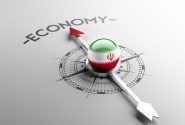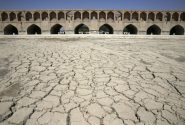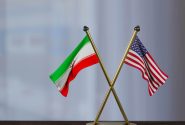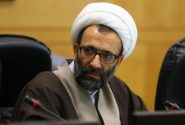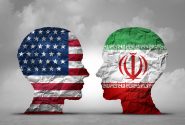It was 47 years ago that stock exchange entered Iran. In fact, initial studies on the establishment of stock exchange in Iran had been date back to 1936. After a comprehensive and detailed analysis, Belgian “Ron Lotrefled “drafted the statute and internal regulations of exchange market and presented it to Iranian authorities but given the circumstances of that time and the outbreak of second world war outbreak, reviewing the plan of stablishing stock Exchange paused for a period of more than 25 years. the approval of the Stock exchange act in the Islamic consultative assembly (Majlis) can be regarded as the first step of creating the exchange market in Iran. The ministry of economic affairs then passed the law for enforcement to central bank and finally in 1962 an initial agreement on starting the exchange market in Iran was signed in a commission consisted of representatives of ministry of finance and ministry of commerce and also representatives of development of industry and mine bank. By the end of the same year (1962) a delegation of Brussels stock exchange headed by the stock exchange secretary general was invited to Iran in order to stablish a partnership in stablishing the stock exchange in Iran. After four years, in 1966 the Stock exchange act in the Islamic consultative assembly approved and then The ministry of economic affairs passed the law for enforcement to central bank. Almost a year after the communication of the law, in 1967 Tehran stock exchange officially started its activities by completing a number of dealings on development of industry and mine bank shares which was then the largest production and manufacturing sector. Exchange Wax and wane The stock market has experienced many ups and downs so far. From 1967 to 1978, the number of companies and institutions listed on Tehran Stock Exchange increased from 10 economic enterprises with a capital of 2.6 billion Rials to 142 companies with more than 308 billion Rials. With the victory of the Islamic Revolution, the number of companies accepted, was reduced from 105 to 56 at the end of 1988. The reason for this reduction has been the acquisition of many economic enterprises by the government. (Due to the nationalization of banks, insurance and some industries in the country, a large number of businesses listed on the stock exchange were excluded). The severe recession in the stock market during the eight years of the imposed war is also one of the important events in the Iranian stock exchange history. Currently, four major stock exchanges in the country operate under the supervision of the securities and exchange organization. Did the stock exchange fulfil its duties? Creating a capital resource for businesses, providing the possibility of foreign investment and creating a resource for the government budget are among the main features of the stock market. These factors were supposed to help Iran to transform its economy, but has the stock market contributed to economic growth? In a healthy economy and a dynamic stock market, financial resources can be enriched through the sale of stocks and bonds. It is possible to strengthen the sense of participation in the general public by investing their small capital in production and commercial activities, it is also possible to prevent the attraction of capitals by speculative activities. Engaging in speculative activities such as buying currency and sometimes properties, and nowadays buying a car, means withdrawing money from the production cycle, which means reducing employment and at the same time increasing unemployment and inflation. It is clear that developing a healthy economy and a dynamic stock exchange is not only achieved through slogans and the mere wish plan, but also the necessary infrastructures needs to be provided first؛ this is the role of the government and parliament to provide the essentials and perform in a lawful, determined and stable manner in their Economic policy-making in line with country›s vision plan and five-year economic development programs. Despite the limitations and problems ahead, the existence of provided potentials and needs has made the position of the stock exchange more prominent and important in recent years. Although the country›s stock market is in a privileged position in terms of demographic, industrial and economic indicators, the lack of necessary means and grounds for equal and widespread participation of resource owners in the Iranian capital market has led to a limited percentage of current capital provided by this market for small shareholders or even private sectors.
limited geographical coverage of the capital market has made the stock exchange unknown in most parts of the country and this is also the reason for the low presence of companies operating in remote parts of the country in this market. The country›s economic thermometer It has contributed to countries’ economic growth and has a positive impact on the world economy as well. In general, it can be maintained that financial markets can play an important role in the economic development of countries and ultimately the development of the world economy by collecting small and major capitals and directing them to productive economic sectors, by encouraging individuals to invest in the stock market. As the economy of a country improves, other countries› will put an extran effort in accelerating their economic growth, and the stock market can help them greatly, as a result the world economy will prosper. The most important goal all countries and societies are striving to achieve, is economic growth and development. Providing a decent life for all members of society is always at the forefront of various goals and plans of countries, and the main factor in the development of societies is the growth of their economy. Investing in the stock market is very important in economic systems, in other words, it acts as an economic thermometer for countries. The role of the stock market in the economy of a country is a role that cannot be neglected. The story of the famous Wall Street Wall Street is currently the New York Stock Exchange, the largest stock market in terms of trading volume and capital market value in the world. As the world›s major stock exchanges began to take the first step, other countries gradually gained stock, so much so that today there are few countries that do not have stock exchanges. If we look at the history of trade and financial exchanges in recent decades, we see the great revolution in the country›s economic system and even the world by Wall Street, the birthplace of most commercial transactions, because today Wall Street is home to America›s richest businessmen. The New York Stock Exchange (NYSE), the world›s largest stock exchange in terms of trade and transactions, is the center of the largest economic units in the United States. Several major US stock exchanges, such as NASDAQ, USEX, the New York Mercantile Exchange (NYMEX) and the New York Stock Exchange (NYBOT), have been stablished in Wall street, the starting point of most business transactions. In September 1653, local residents, now New Yorkers, built a large wall on the island of Manhattan to protect themselves from local aggression and the invasion of Oliver Cromwell›s army. over time and by development of Manhattan, a street along that wall was built with the same name (Wall street) and the name still remains on it.







